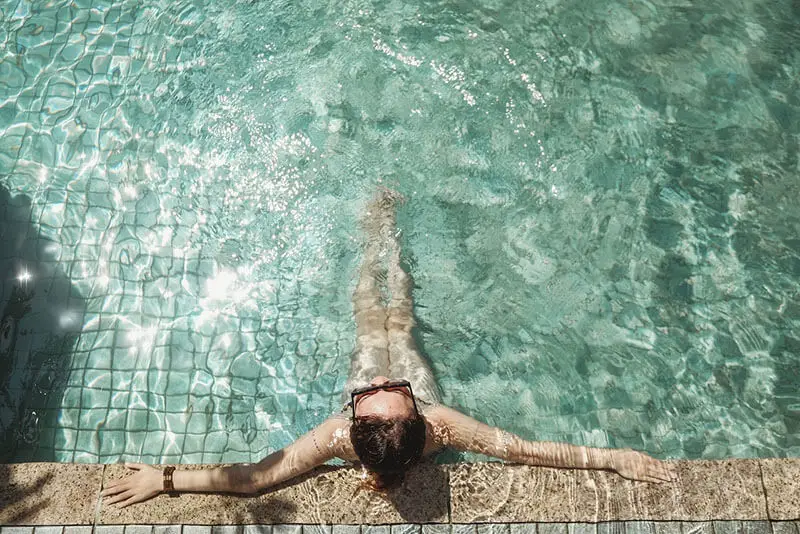According to the U.S. Department of Health & Human Services, most women will get a vaginal yeast infection at some point in their life. In fact, not just women, but young girls can also suffer from yeast infections though it’s rarer before puberty.
So if you start exhibiting the telltale signs of a yeast infection (e.g. itchiness, burning, white discharge) during the summer, you might be wondering: can I still go swimming at the pool or the beach? Would swimming make the yeast infection even worse? What even causes yeast infections in the first place, and how can you prevent it?
Keep reading on to learn the answers to these questions. To be clear, I am not a medical doctor and the answers provided in this article are based on my own personal experiences and extensive research. I highly recommend you talk to your physician if you are worried about your yeast infection.
Can you swim in a pool with a yeast infection?
It is completely safe to use your spa or swimming pool even if you have a yeast infection, according to Dr. Orli Etingin in an article written for everydayhealth.com
She states yeast infections are “not contagious in this way — it can only be passed through sexual contact”. In fact, the chances of spreading yeast infection are low even with sexual contact.
It may even be a good idea to go swimming in a pool if you have a yeast infection. Most swimming pools are sanitized using chlorine, a disinfecting agent that kills bacteria including yeast.
However, hot tubs are a no-go. The high temperatures can change the acid and PH levels in the vagina which can help yeast thrive. Furthermore, private hot tubs may not be chlorinated properly, though the same can also be said of private swimming pools.
Be extremely careful when swimming at a friend’s pool/tub, and if it’s your own, then make sure you’re testing the water with pool test strips to ensure the chlorine levels, pH, and alkalinity are at the right levels.
Can you swim in the ocean with a yeast infection?
Reiterating the answer above: yeast infections can only be passed through sexual contact. So whether you’re swimming in saltwater, chlorinated, or freshwater, it will not cause yeast infection to spread.
Will swimming make a yeast infection worse?
Swimming may potentially exacerbate the discomfort you are experiencing with yeast infection depending on how severe your case is.
For instance, if you have lesions around your hoo-ha, exposing it to chlorine or saltwater can potentially irritate it further.
Swimming can indirectly make a yeast infection worse because it may result in you wearing wet/damp clothes. Any warm and/or moist environment is a combination for yeast to rapidly grow out of control.
Can swimming pools cause yeast infection?
If you’re asking whether yeast infection can be spread by someone with a yeast infection to you via the pool water, the answer is no; it can only be spread through sexual contact.
If you happen to be wearing your damp swimwear for a long period of time, e.g. during your day at the beach, then that is the perfect environment for yeast to thrive and cause an infection.
So yes, any water activity can introduce the perfect environment for yeast to multiply, but if you’re taking preventative measures to avoid getting a yeast infection, then chances are really low.
How to avoid getting a yeast infection
Whether you currently have a yeast infection or not, the best thing you can do is to keep your vaginal area as dry as possible. Here are the best ways to do that.
- Bring a dry set of clothes you can change into. Not only that, but also do not wear damp clothes for too long.
- Use a drying agent. If it’s really hot and you feel like you’re sweating a lot in the crotch area, then consider using a drying agent such as talcum powder to keep yourself as dry as possible.
- Wear breathable and quick-drying clothing. For instance, you can wear a cover up over your swimsuit. A cover up can provide a bit of modesty, sun protection, and most relevant to this article: it encourages lots of air flow so that your legs can breathe. You can also wear dresses/skirts or moisture-wicking workout clothing such as Dri-Fit to achieve a similar effect.
- Be careful about getting your clothes wet. Unlike swimwear, clothing made with cotton for example will absorb water and take much longer to dry. Do not wear your wet swimsuit under your regular clothes as underwear either.
- If there are showers nearby, shower before entering the water and after exiting it. Use a mild soap at a minimum, and specially formulated pH balanced cleansers can be used as well. When drying your genital area, try not to rub too vigorously with the towel.
- If you have a history of getting yeast infection every summer, speak to your doctor about it. Perhaps you can be prescribed an anti-fungal medication that can protect you against yeast infections.

